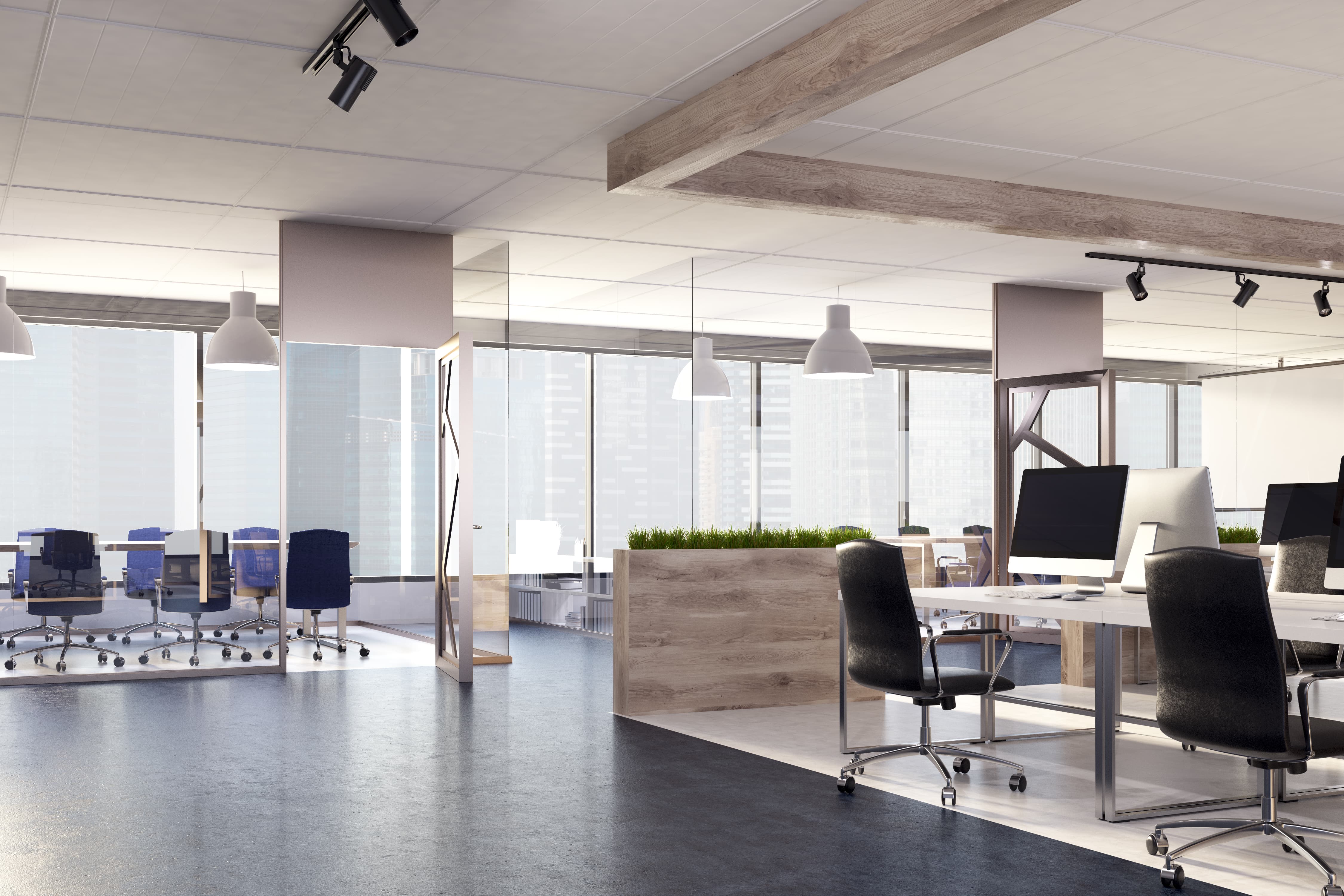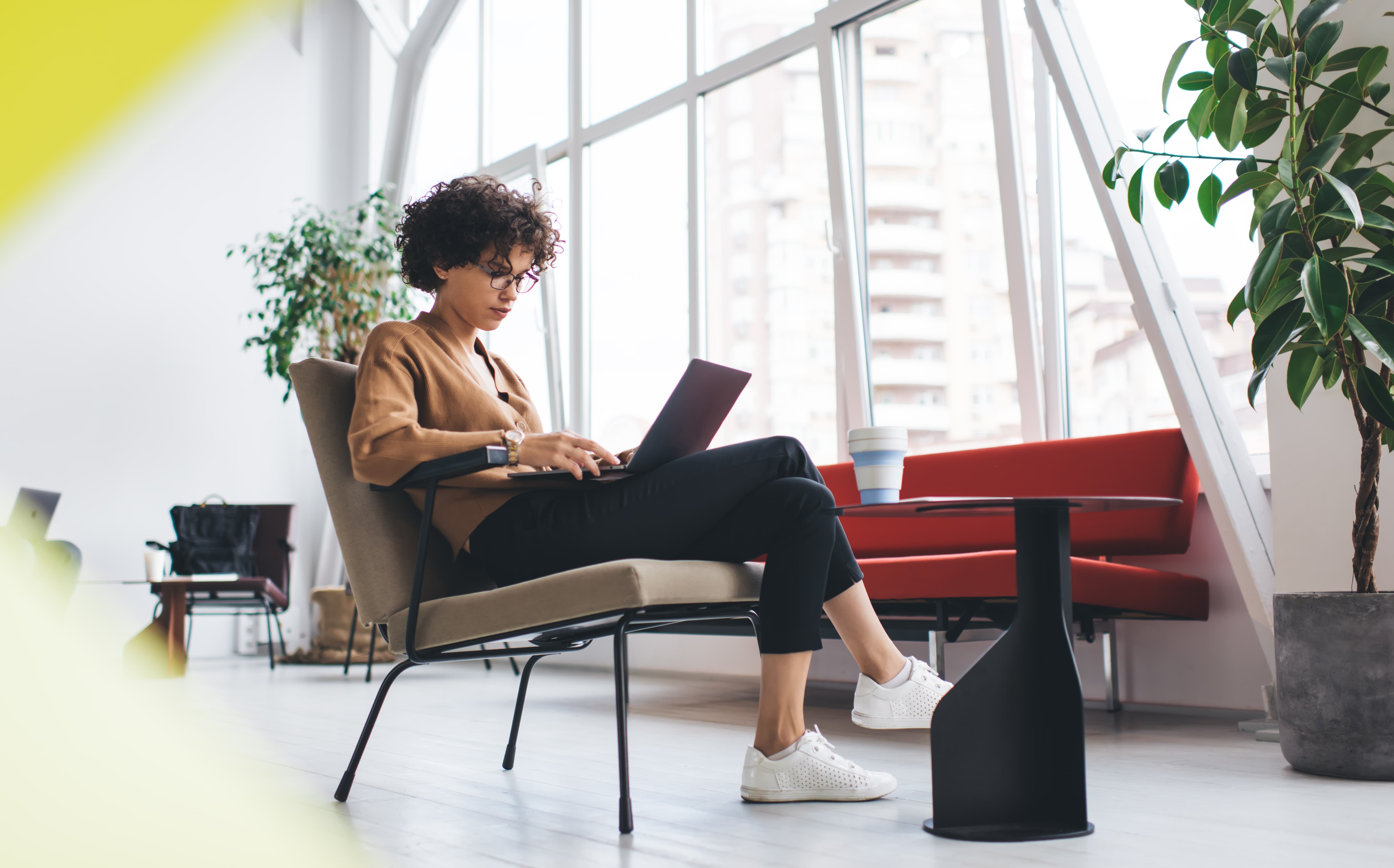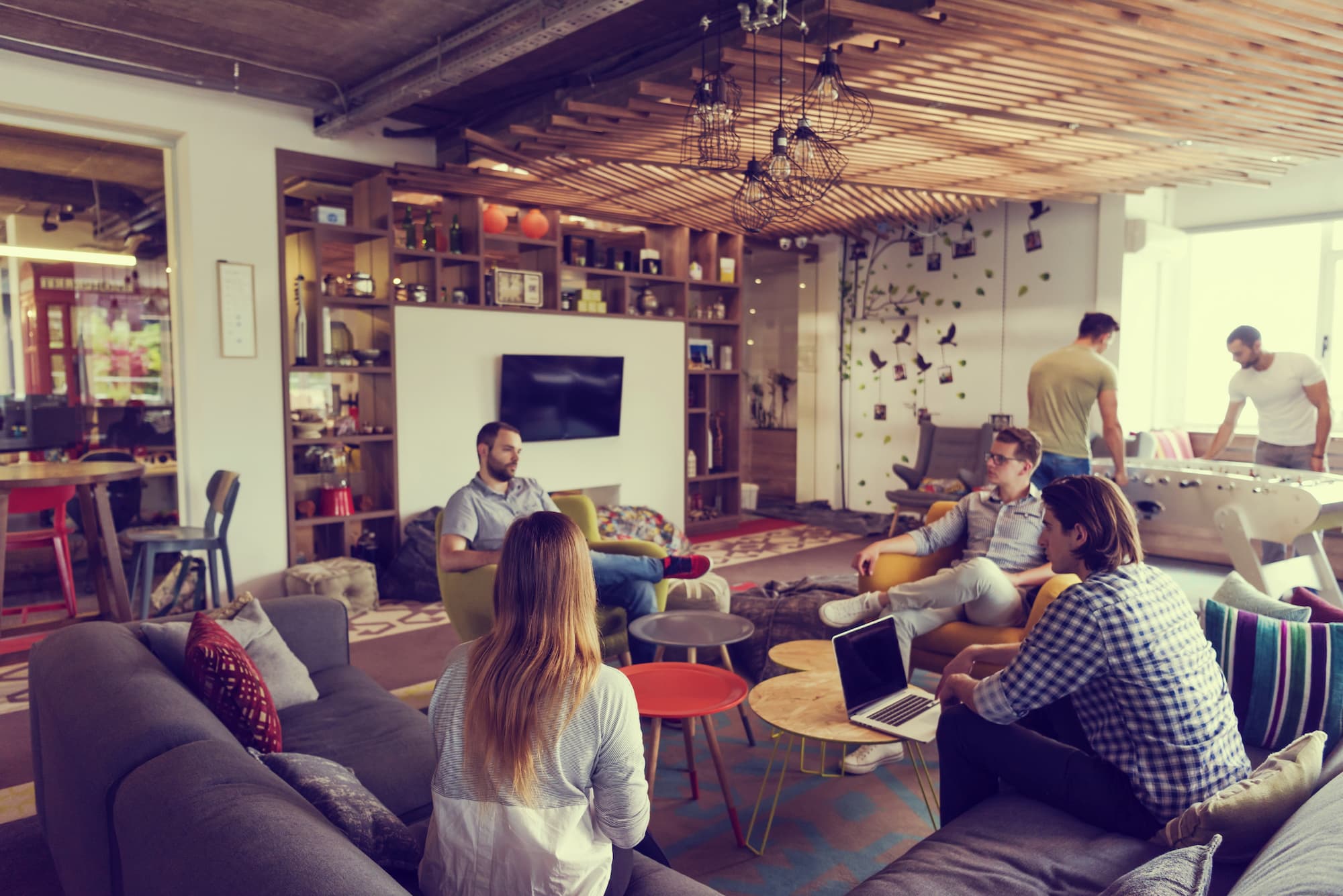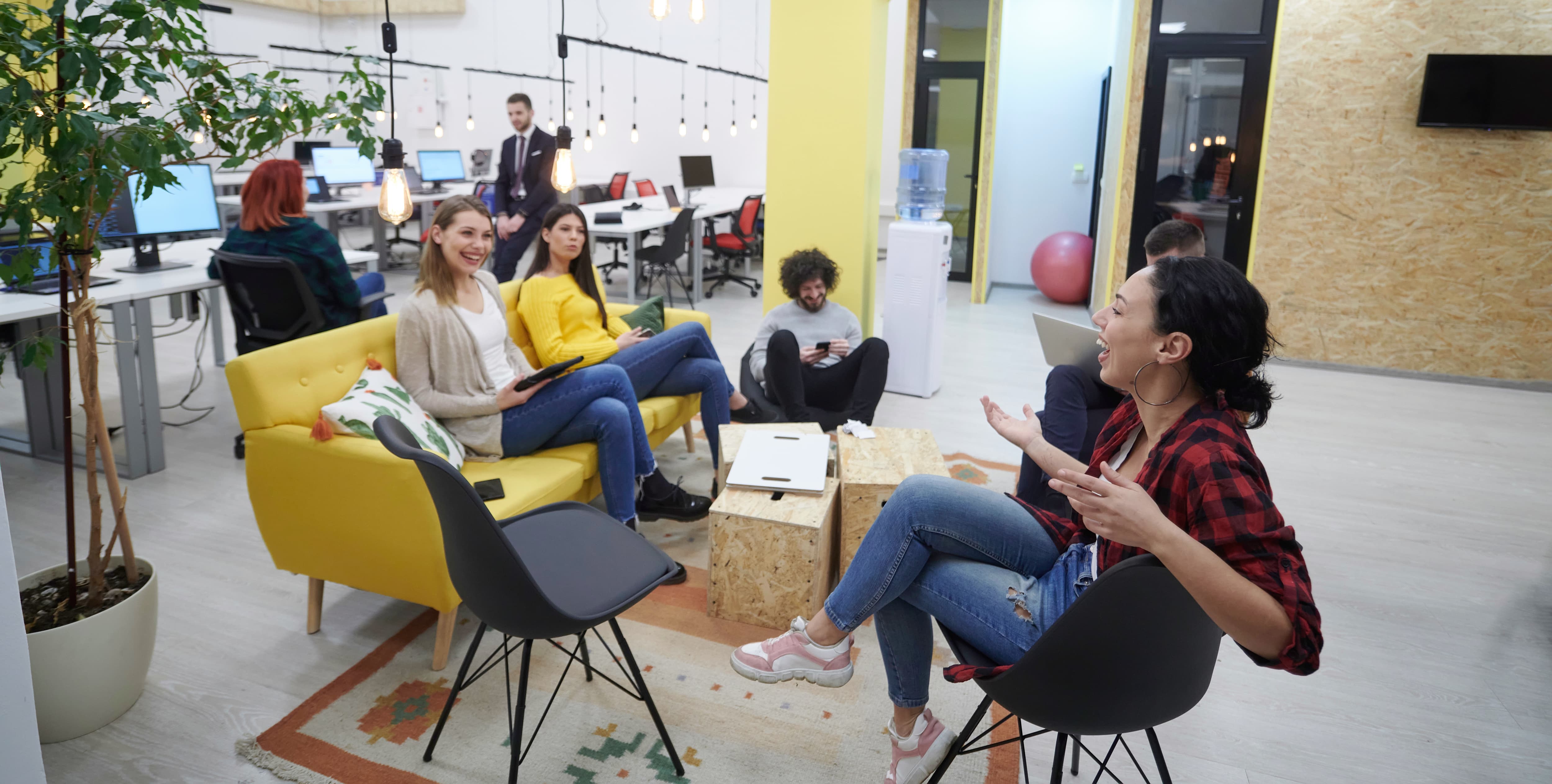Most of you want a house that feels like a home. You decorate each room with purpose, in a way that leaves you motivated for the activities the room is designed for. The bedroom, for example, likely offers up relaxing tones, soft textures, and of course, a bed – all with the intention of eliciting a desire to sleep.
Down the hall, your dining room probably boasts vibrant colors, stimulating artwork and comfortable chairs for the purpose of encouraging lively conversation between friends and family.
What does this all have to do with work and office design?
Well, in 2018, office design experts are noticing a shift. Businesses want to create more purposeful spaces in their offices, like they have at home. There’s an understanding that office design has a role in affecting the behavior of employees and clients.
Read on to discover the latest office trends and how design can impact mood in the workplace:
1. Activity based working
It isn’t practical to cook dinner in the living room or wash laundry in the bathroom, right? Expecting employees to complete a task in a space that wasn’t designed for that purpose doesn’t really make sense, either.
Due to this line of thought, many companies are switching to an activity based work (ABW) design in their offices. ABW spaces function on the premise of giving employees the option to work where and how they choose. Workers decide the best place to complete a task. It’s up to employers to provide workers with the shared spaces needed to efficiently do their jobs.
What does this look like? If you walk into an ABW office, you’ll see large, group workspaces, stand-up tables, an employee lounge, private nooks and stimulating boardrooms. These are all multi-purpose, shared spaces designed with efficiency and productivity in mind.
2. Taming the technology
It seems like few aspects of life are evolving as rapidly as technology. While this is great news for productivity in the workplace, it isn’t so great in terms of design. Picture employees tripping over mangled knots of cords and wires; trying to find an outlet with only 3 percent battery life on a tablet; fiddling with laptop docking stations every morning upon arriving at work. These time-wasting inconveniences are frustrating, and thankfully, unnecessary.
Since businesses began placing a higher value on incorporating technology in design, manufacturers started providing options to make technology less of an eyesore (not to mention safety hazard). You can hide cords, wires and outlets in walls, furniture or the floors. Better yet, you can often eliminate them entirely.
3. Collaboration is key
One of the most dramatic alterations to traditional office design is with the elimination of walls. The younger generations taking over the workforce reject the ideology of ‘every man and woman for themselves’. Instead of barricading themselves behind office walls, employees prefer collaborative work environments.
Common sense – and the evidence from studies that back it up – shows the benefits of teamwork and collaboration. The closed-door mentality stifles creativity and productivity. Group workspaces, team lounges and open-concept design make more sense. And progressive businesses are jumping on board.
4. Incorporating varied color and texture
While activity based working promotes the idea that there isn’t one single space for every role an employee performs, the same goes for design elements like color and texture. No one color stimulates the desired mood for every aspect of work.
Certain spaces, like the office lounge or team meeting area can benefit from bright, creativity-sparking splashes of color. On the other hand, areas intended for concentration are better served with more neutral hues like blue or green.
As for texture, don’t be afraid of a little variety, too. Different textures create a more visually, and therefore mentally stimulating environment. Texture also provides the opportunity for employee’s to express their personal style, making the space they spend the most time in feel comfortable and homey.
5. Focus on sustainability
Creating an environmentally friendly office isn’t just the latest design trend. It’s a responsibility. Companies recognize that in order to attract and retain the best talent, they must offer a sustainable office design. Sustainability goes beyond simply placing recycle bins under every desk and asking staff to turn the lights off when they leave a room. Going green starts with office design. Incorporate elements such as natural and high-efficiency lighting. Cut down on square footage and furniture requirements by utilizing shared workspaces.
6. Nurture the nature
Perhaps one of the most welcome design trends of the year is the inclusion of nature in the workplace. Natural lighting, elements of wood and greenery, fireplaces – these all appeal to the desire to be close with nature. When used appropriately, they also set a more relaxed, calm tone that puts employees and clients at ease.
If you’re interested in any of these design trends, but aren’t sure where to start, get in touch. One of the talented designers at TruSpace would love to discuss the vision for your company’s future with you. And since they offer a complimentary design consultation, there’s no reason not to reach out today.




